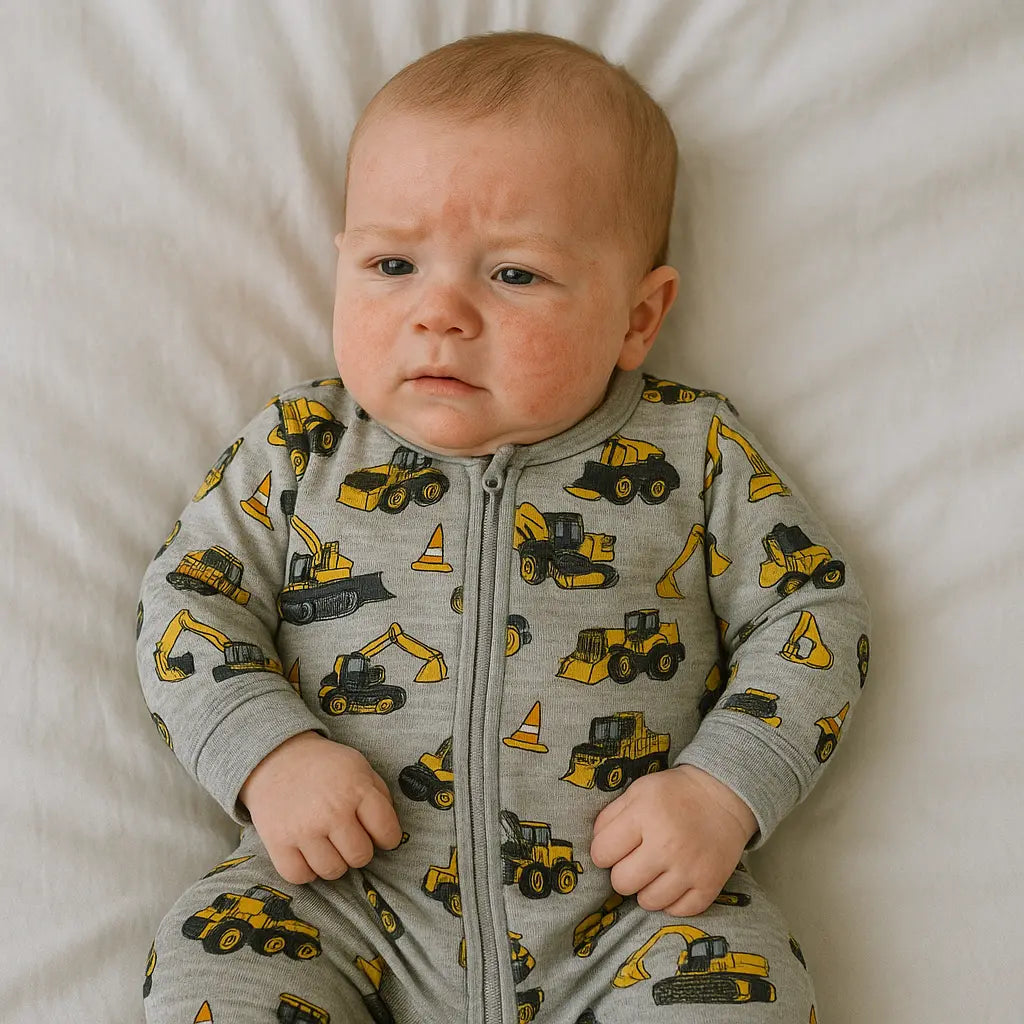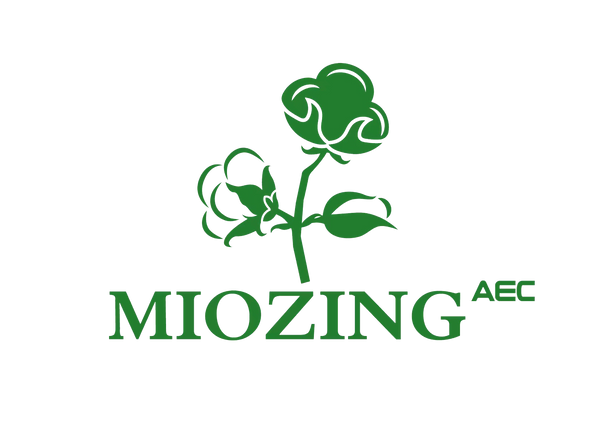
The Best Eczema Clothing for Toddlers
Share
Eczema is a common condition that causes dry, itchy skin. The most common type of eczema is atopic dermatitis, which affects more than 1 in 10 children in the United States. Following your child's eczema treatment plan can help relieve symptoms, reduce the risk of complications, and improve quality of life. It's also important to limit your child's eczema triggers. For example, rough clothing, friction, and sweat may worsen your child's eczema symptoms. Some laundry detergents and other products may also irritate your child's skin.
To maintain excellent skin health and comfort, you should choose fabrics and laundry products that are suitable for people with eczema. Bamboo baby clothes are soft and perfect for eczema-prone skin. Not only does it feel silky soft, but it's also hypoallergenic and antibacterial. Here's what you need to know to pick the right clothes for your child's delicate skin.
Eczema and Children's Skin: What You Need to Know
Choosing the Right Eczema-Proof Clothing for Toddlers and Children Unfortunately, atopic dermatitis is more common in children. Babies are more likely to develop eczema than adults. Experts don't know exactly what causes it, but researchers believe that both environmental allergens and genetic factors are involved in flare-ups. Treatment can help manage and treat eczema, which is often a long-term (chronic) condition.
Avoiding environmental factors that may trigger eczema, such as chemicals (used in clothing dyes), irritants, and certain detergents, can help soothe your child's skin. With the right strategy, you can even prevent eczema rashes from developing into blisters that damage the important skin barrier.
Best fabrics for children with eczema
Some materials can worsen the side effects of atopic dermatitis and eczema. Clothing made from wool and synthetic materials, such as polyester and latex, tends to irritate and trigger skin inflammation. Many of these products also contain chemical dyes that may trigger allergic reactions.
Bamboo baby clothes are the best fabrics to avoid eczema relapses, and they have the following features:
Made from fine, smooth fibers
Breathable, easily wicking moisture away from the skin
Easy to regulate body temperature
Comfortable to wear
Fabrics with antimicrobial properties may also be beneficial for children with eczema.

Our products are all-natural and do not contain any harmful chemicals or flame-retardant materials. Plus, by choosing bamboo fabrics for your baby clothes, you know you are protecting the planet, too. Bamboo fabric is very environmentally friendly and safe for the earth. In addition, we also provide customized services in various beautiful patterns to suit any style.
What to avoid in baby clothes?
1. No synthetic fibers
Modern textiles have evolved dramatically since we were kids. Chemical synthetic fibers, including polyester, acrylic, nylon, rayon, and spandex, now possess a soft and comfortable feel to the touch. Because of this, they seem like a safe bet for your clothing. Babies prone to eczema But you should stay away from synthetics as much as possible. Here’s why:
Synthetic fibers don’t absorb sweat like natural fibers do.
Synthetic fabrics don’t let the skin breathe.
Synthetics don’t absorb sweat, which means trace chemicals like ammonia, urea, salt, and sugar stay on the skin longer. When these chemicals penetrate the skin’s protective barrier, they can trigger eczema.
In addition, the non-breathable nature of synthetics can exacerbate the problem. When air flows over your baby’s skin, it helps evaporate and remove chemicals, toxins, and other allergens that may be triggering itching. Without airflow, these allergens are likely to pass through the hydrolipid layer and irritate already dry skin.
2. Use hypoallergenic laundry soap
Now that you know how to choose the right fabrics for your baby’s clothes to prevent eczema flare-ups, let’s discuss how to keep those clothes clean. The first step is to use hypoallergenic laundry soap to minimize the chances that your baby will be allergic to it.
3. Rinse your clothes thoroughly
The second step to preventing laundry-induced eczema flare-ups is to rinse your bamboo baby clothes thoroughly. Most modern washing machines allow you to choose the number of rinses you want to use for a single wash. We recommend rinsing at least twice to remove any harsh chemicals or allergens that may have remained on the clothes from the first rinse. Even if you use a high-quality hypoallergenic soap for laundry, sometimes it’s recommended to rinse once more just to be safe.
4. Dry your baby’s clothes indoors
If you hang your clothes on a clothesline outside, pollen and other airborne allergens may cling to them. For children (or adults) with normal skin, this isn’t a problem. However, it can trigger itching in children with eczema-prone skin. Alternatively, use a dryer to dry your baby clothes.
5. Apply moisturizer before dressing your baby
Applying moisturizer before dressing your baby is one of the best ways to prevent eczema flare-ups. Apply moisturizer all over your baby’s body before picking out clothes for him. Please keep in mind particularly sensitive areas, such as the backs of the knees and the insides of the elbows. A thin layer of cream can protect delicate skin from triggers that cause skin flare-ups, such as friction, irritation, and heat.

6. Avoid itchy tags
Clothing tags can trigger flare-ups for children with eczema, and just one point of contact with eczema-prone skin can cause eczema to spread all over your baby’s body. However, you can prevent this problem by removing tags from all of your baby’s eczema-proof clothing. Try to cut the tags close to the fabric, and make sure there are no sharp edges that will poke your baby’s skin. If the tags are made of rough material and still irritate your baby’s skin, cover the remaining tags with a small piece of silk or soft cotton.
For best results, buy bamboo baby clothes without tags whenever possible.
7. Make sure your baby's clothes don't contain chemicals or dyes
Chemicals themselves can cause problems for eczema-prone skin. Even clothes that don't have these chemicals added to them can cause eczema flare-ups. This is because the dyes used to color fabrics can irritate sensitive skin. When buying baby clothes, always read labels and always choose fabrics that don't have added chemicals. To avoid staining issues, white fabrics are the best choice for your baby.
8. Consider protective base layers
We offer protective base layers in various shapes and sizes that your baby can wear to prevent clothing from causing skin irritation. These protective base layers have the following unique properties:
Thermal regulation (keeps baby at the right temperature)
No harsh chemicals
No dyes
Flat seams
Labels without traces
Ultra-soft and breathable materials
Non-itch fabrics
Choose gloves, sleeves, leggings, socks, shirts, and even rompers with foldable gloves. Combined with the use of moisturizing products, protective base layers are one of the best ways to prevent clothing from causing damage to your baby's delicate skin.
Choosing the right baby clothes for toddlers with sensitive skin is no simple task. While there is plenty of clothing on the market that claims to be soft and hypoallergenic, few can compare to bamboo. Bamboo clothes are the perfect solution for any child with sensitive skin.
With so many stylish options, you’re sure to find the perfect clothing for your eczema-prone baby here at Miozing. Shop the best baby clothes for today’s toddlers.
